Crystal clear: jewellers are hypnotised by glass
The enduring appeal of glass has captivated jewellers for centuries
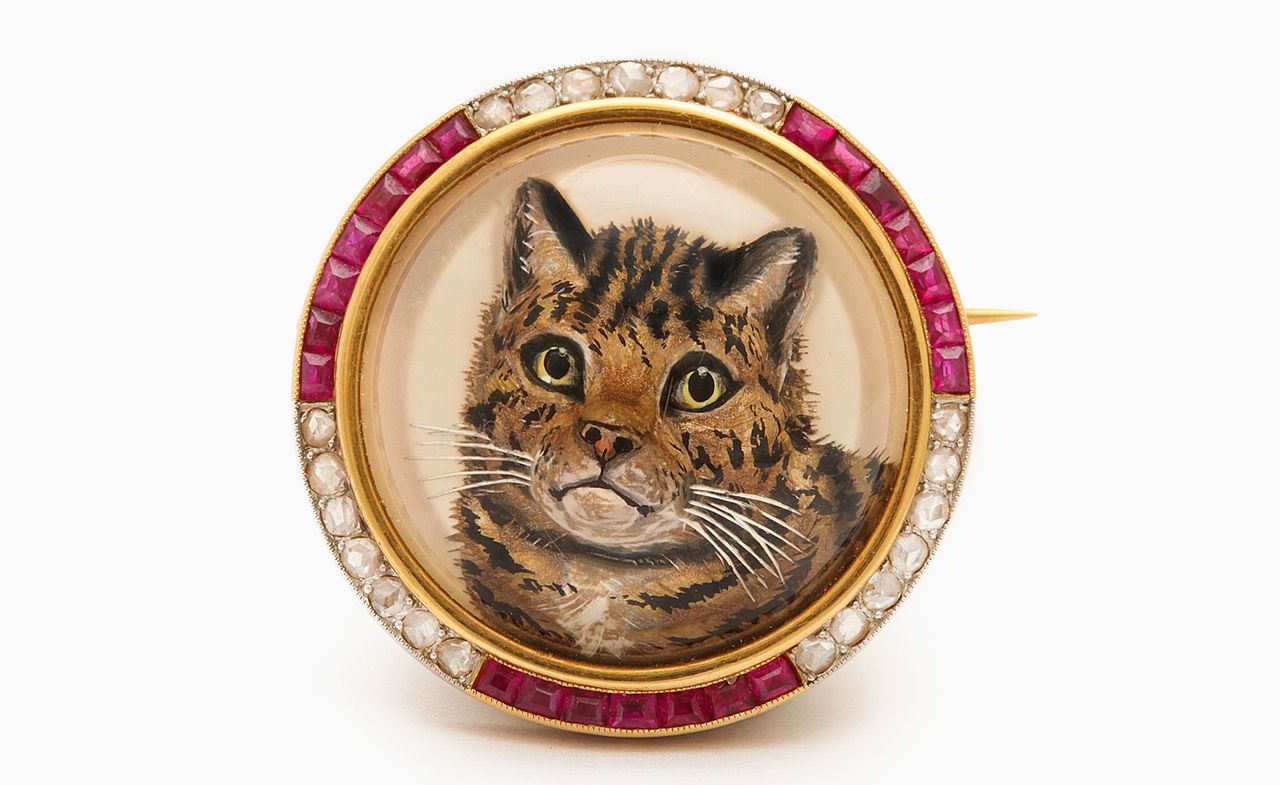
The contradictions inherent in glass have long fascinated jewellers who are drawn to the wealth of possibilities it offers. Today a sustainable alternative, glass jewellery is utilised to reduce environmental impact. Contemporary jewels draw on the rich history of glass in jewellery, its inclusion unfailingly rendering antique and new pieces alike wholly modern.
Francesca Villa at Objet d’Emotion
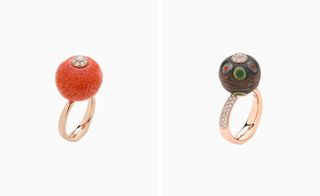
Francesca Villa delves into a historical jewellery box for her delicate rings crafted from early nineteenth century Venetian glass beads. Long prized for their beauty, glass beads were often a form of currency for tribes on the African continent who commissioned them for trade from European explorers. Francesca Villa, enticed by the unique spotted finish on the beads, uses a gold post studded with diamonds to attach a single bead to a band, creating a ring. By sculpting a flat base at the bottom of the band, she allows for the ring to stand alone, a beautiful miniature sculpture in its own right.
Annika Inez
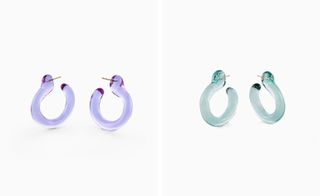
‘I am drawn to glass because of its ability to be both bold and barely there at the same time – it is both minimalist and maximalist,’ says New York-based jeweller Annika Inez. Her twisting loops of glass nod to its ability to appear frozen in time, caught between its two states of liquid and solid. ‘I love that glass is an amorphous solid,’ she says. ‘Transparent hand-shaped glass has a visual quality, looking like it might melt at any moment.’ She is inspired by Swedish artist Åsa Jungnelius, whose bold and generous silhouettes belie the apparent fragility of glass. ‘I feel there are great possibilities with glass in that traditionally it has been thought of as more of a crafty ‘hippie’ material, so there is a larger unexplored realm of art and design still available.’
A La Vieille Russie
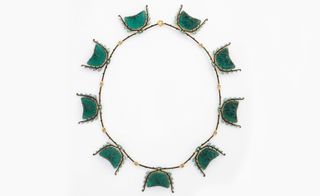
New York-based antiques dealer A La Vieille Russie have glass pieces dating back two centuries in their collection. Their jewels reflect designers’ fascinations with passing trends; many pieces, for example, are crafted from glass paste, which was favoured in the late nineteenth century by jewellers looking to emulate precious stones. Glass paste, a type of glass developed by glassmakers who experimented with lead oxide, was foiled and backed in silver, eventually becoming a desirable material in its own right. Other pieces, such as the reverse crystal cat brooch, were the result of popular yet laborious techniques. Peter Schaffer, director of A La Vieille Russie, explains: ‘First, the cabochon form is cut and ground by hand. Next, a draft in watercolour is made on the reverse, followed by scratching, and then engraving, the image into the crystal before painting. The three-dimensional effect created by this technique really brings the pieces to life.’ René Lalique was another who was fascinated by the possibilities glass could offer – pictured above are his crystal wasps linked by an enamelled vine; a tantalising mix of fragility and malevolence.
Cled
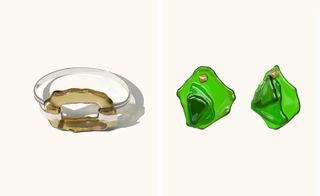
Cled’s focus on sustainable jewellery led them to an organic emphasis on glass. ‘Glass is an eco-friendly material composed of sand and is a renewable resource, which means it can be recycled endlessly without a loss of purity,’ explains founder Seulye Jo. They upcycle discarded glass bottles in a plethora of hues and patterns and curve them into any shape they desire – an abstract amorphous contour, an oval loop, a flower. ‘It's always mesmerising to see the fluid movement of glass as heat and gravity work together in the flame. This magical transition is so impressive. Glass can look like liquid when it's molten, but after it's annealed, it is rock solid like any other stone.’ By melting glass in a kiln, curves and kinks can be reshaped, smooth lines forming from sharp edges. ‘Many experiments are done with recycled glass, and discovering unexpected outcomes makes this fun and ultimately leads to new unconventional designs,’ says Seulye Jo.
INFORMATION
objetdemotion.com
annikainez.com
alvr.com
thecled.com
Wallpaper* Newsletter
Receive our daily digest of inspiration, escapism and design stories from around the world direct to your inbox.
Hannah Silver is the Art, Culture, Watches & Jewellery Editor of Wallpaper*. Since joining in 2019, she has overseen offbeat design trends and in-depth profiles, and written extensively across the worlds of culture and luxury. She enjoys meeting artists and designers, viewing exhibitions and conducting interviews on her frequent travels.
-
 A triplex Mumbai penthouse contains sculptural staircases and expansive terraces
A triplex Mumbai penthouse contains sculptural staircases and expansive terracesEnso House is a multigenerational Mumbai penthouse by S+PS Architects that combines a reorganised interior programme with bespoke finishes and crafts
By Jonathan Bell Published
-
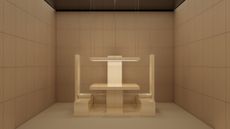 Emerging galleries to discover during Milan Design Week
Emerging galleries to discover during Milan Design WeekWallpaper’s Milan editor has the inside track on the younger design galleries coming to town
By Laura May Todd Published
-
 Exploring this whimsical North London home feels like going down the rabbit hole
Exploring this whimsical North London home feels like going down the rabbit holeWallpaper* series, The Inside Story, spotlights intriguing, exciting or innovative interiors. OntheSq is the result of a renovation of a beautiful period property, which has been dressed in a mélange of designs loosely inspired by 'Alice in Wonderland'
By Anna Solomon Published
-
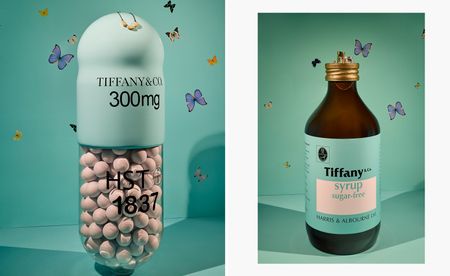 Art takes London: Tiffany & Co, Damien Hirst and artists take over Selfridges' windows
Art takes London: Tiffany & Co, Damien Hirst and artists take over Selfridges' windowsFour British contemporary artists celebrate Tiffany & Co's pioneering history with a series of storied window displays
By Anne Soward Published
-
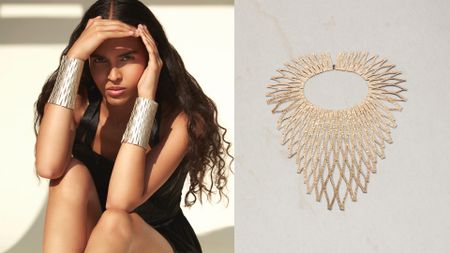 Late summer jewels: what to wear at Golden Hour
Late summer jewels: what to wear at Golden HourLate summer signals a jewellery style-shift. These independent designers have got it covered
By Caragh McKay Published
-
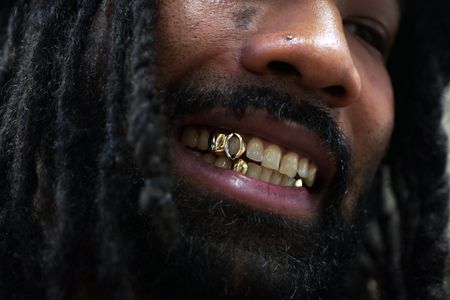 All smiles: How a grillz jewellery making class in London became an international hit
All smiles: How a grillz jewellery making class in London became an international hitWhat started as a passion project quickly exploded in popularity. We get the story behind the grillz-making workshop at Cockpit London
By Elisa Anniss Published
-
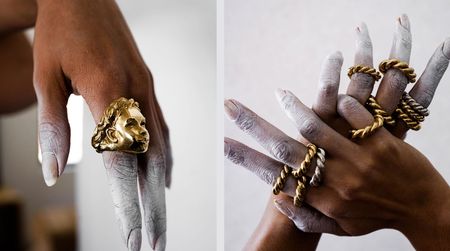 Emerging jewellery designers to get to know
Emerging jewellery designers to get to knowThese independent, new and emerging jewellery designers and brands from New York to Paris are firmly on our radar
By Hannah Silver Published
-
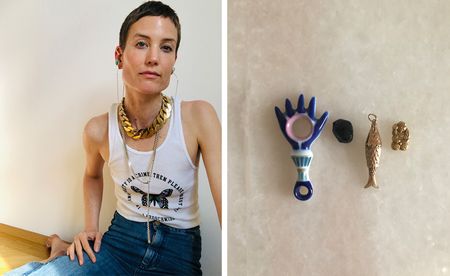 Jewellery designers share their most precious personal pieces
Jewellery designers share their most precious personal piecesA host of jewellers give us a peek at the jewellery which brings them joy and solace
By Hannah Silver Published
-
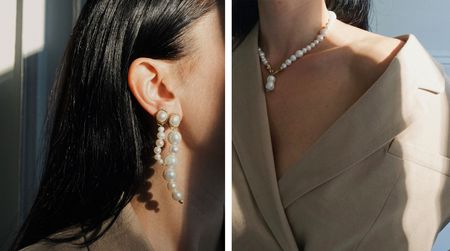 Playing it cool: pearls are having a moment
Playing it cool: pearls are having a momentWe've been deep-diving into boutiques around the world to find the very best calcium carbonate in minute crystalline form. It seems jewellers have been busy rethinking pearls, with contemporary (and often affordable) results
By Hannah Silver Published
-
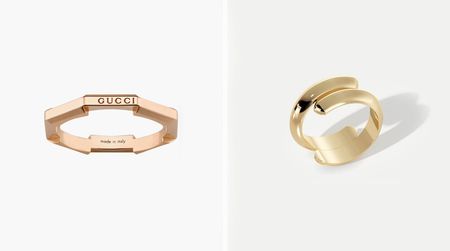 Eternity rings for the modern couple
Eternity rings for the modern coupleEternity rings, whether sleekly minimalist or sprinkled in diamonds, can be a chic and contemporary love token
By Hannah Silver Published
-
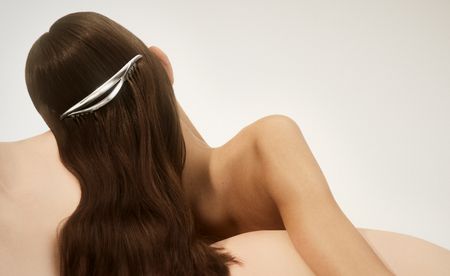 Hair jewellery to covet and collect
Hair jewellery to covet and collectToday’s hair jewellery is both practical and pretty. We're pinning our hopes on these simple and elegant accessories
By Hannah Silver Last updated